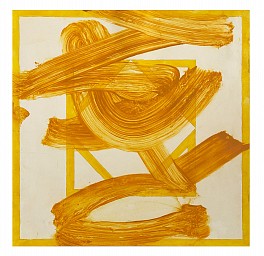BIOGRAPHY

Painting is a form of alchemy; materials of little value, when acted upon, change into something
much more than themselves; as in making a silk purse from a sow’s ear. I have been painting for
forty-five years working with this magic. When any mark is put on paper or canvas we see that
mark as existing in front of the surface, somehow accepting this untruth, we suspend our
disbelief and enter into a different reality, as we do when we hear; "Once upon a time...", or "A
man walked into a bar...". There is illusion; making what is two-dimensional appear to be three-
dimensional, a bottle, a figure, a landscape. There is also the desire to make visible what is
invisible; the spiritual, and entasis; distortion of the truth to create the appearance of truth.
Perhaps this is what Picasso meant when he said; “Art is the lie that tells the truth.”
No artist works in a vacuum. Art is a language that we learn, like the words we speak, and we
learn to paint what we think. My first language of art was Abstract Expressionism. I was attracted
to the drama and excitement of it, and came to believe that just the pure act of painting—hand,
brush, paint, canvas (and my youthful passion)--was subject matter enough. I felt through
abstraction, gestural, or geometric, we were redefining the language of art to a purer and more
essential form, discarding unnecessary, superfluous elements such as representation and illusion.
Eventually I wanted non-verbal symbols, potent Jungian archetypes that would express the
powerful dichotomy I felt between the spiritual and the profane, death and regeneration. I saw
myself as a priest or shaman, trying to decode or reinvent primordial cultural icons.
For many years I have been drawn to Italian painting, the early Renaissance frescos of Giotto and
Fra Angelico in particular but also the fragments and paintings from Pompeii. Fra Angelico was a
priest who believed in the Beatific Vision and he was a man who saw the world around him as a
real and beautiful place. He brought these two ideas together into a sensual and spiritual space. I
see in the Pompeian House of Mysteries the same Mediterranean calm and classical ideal clothed
in a pagan rite.
The surface of the painting is very important, as complicated as memory, it is where the
transparent skein of paint offers passage from this to that other world, where we give ourselves
over to the symbol and illusion made with marks and colors.
-Joseph Haske (2007)
